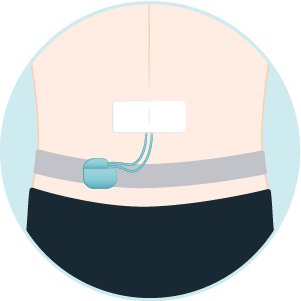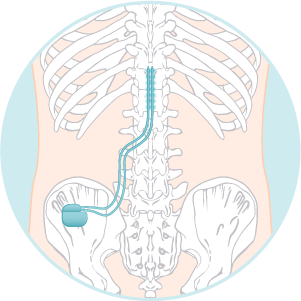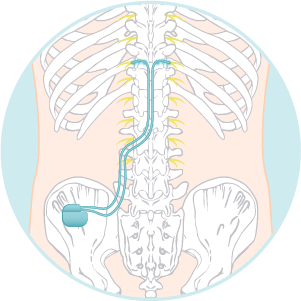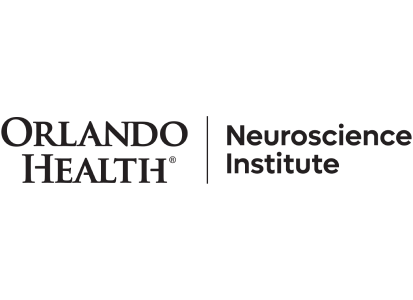Spinal Cord Stimulation and Dorsal Root Ganglion Stimulation
Overview
These treatments treat chronic pain that hasn’t responded to nonsurgical procedures. An implanted pacemaker-like device uses mild electrical impulses to interrupt pain signals in the spine.
The procedures are comprised of two stages. A three- to 14-day trial period, where the controller device is worn outside the body, will be used to assess whether the treatment is right for you. If the trial is successful, surgery will be used for a “permanent” implant in your lower back.
-

External Device Trial
Who Benefits?
The procedure can help patients with a variety of chronic pain sources, including failed back surgery, spinal cord injuries, complex regional pain syndrome, diabetic neuropathy and heart pain (angina) untreated by other means.
Are There Different Approaches to This Treatment?
With the traditional spinal cord stimulator, the wires that deliver the electrical current are inserted in the epidural space behind your spinal cord. This allows them to apply a current to a large, general area.
Dorsal root ganglion (DRG) stimulation may be a better option, particularly if you have complex regional pain syndrome, which causes severe pain and hypersensitivity in an arm or leg. The DRG is an easily accessible bundle of spinal nerves that makes it easier to target a specific body part.
-

Spinal Cord Stimulator
-

Dorsal Root Ganglion Stimulator
Recovery Expectations
Both the trial and permanent implant portion of either procedure is done in an outpatient setting. The trial procedure takes 30 minutes to an hour, while the permanent implant can take about two hours. You should plan to have someone available to drive you home, since the procedure will use conscious sedation or general anesthesia.
Soreness from the permanent procedure, which includes two incisions, may last for about two weeks. You should be able to return to light activities within a few days of the procedure. But lifting, bending and twisting should be limited for two months.

